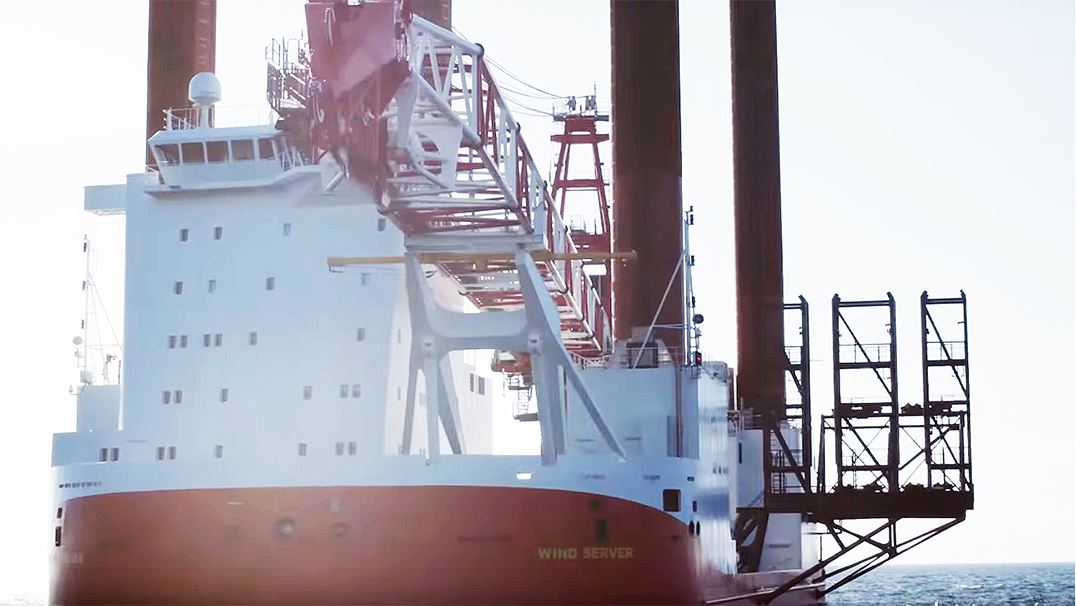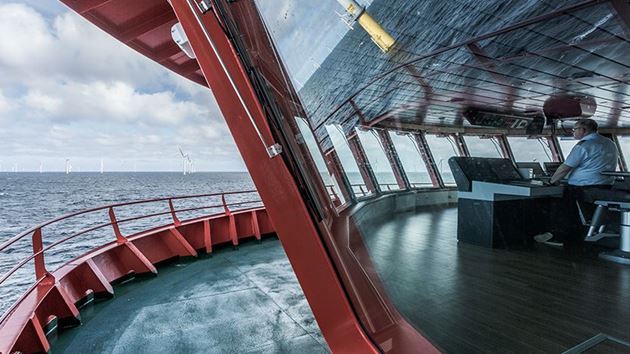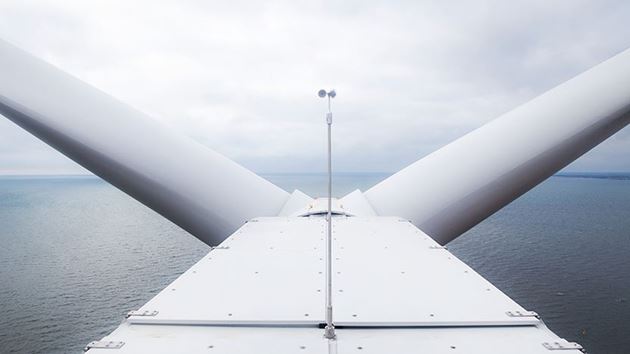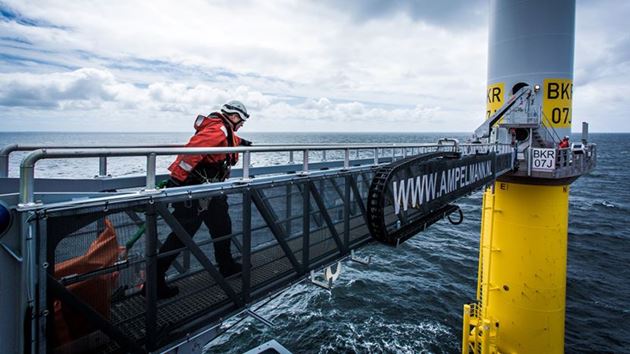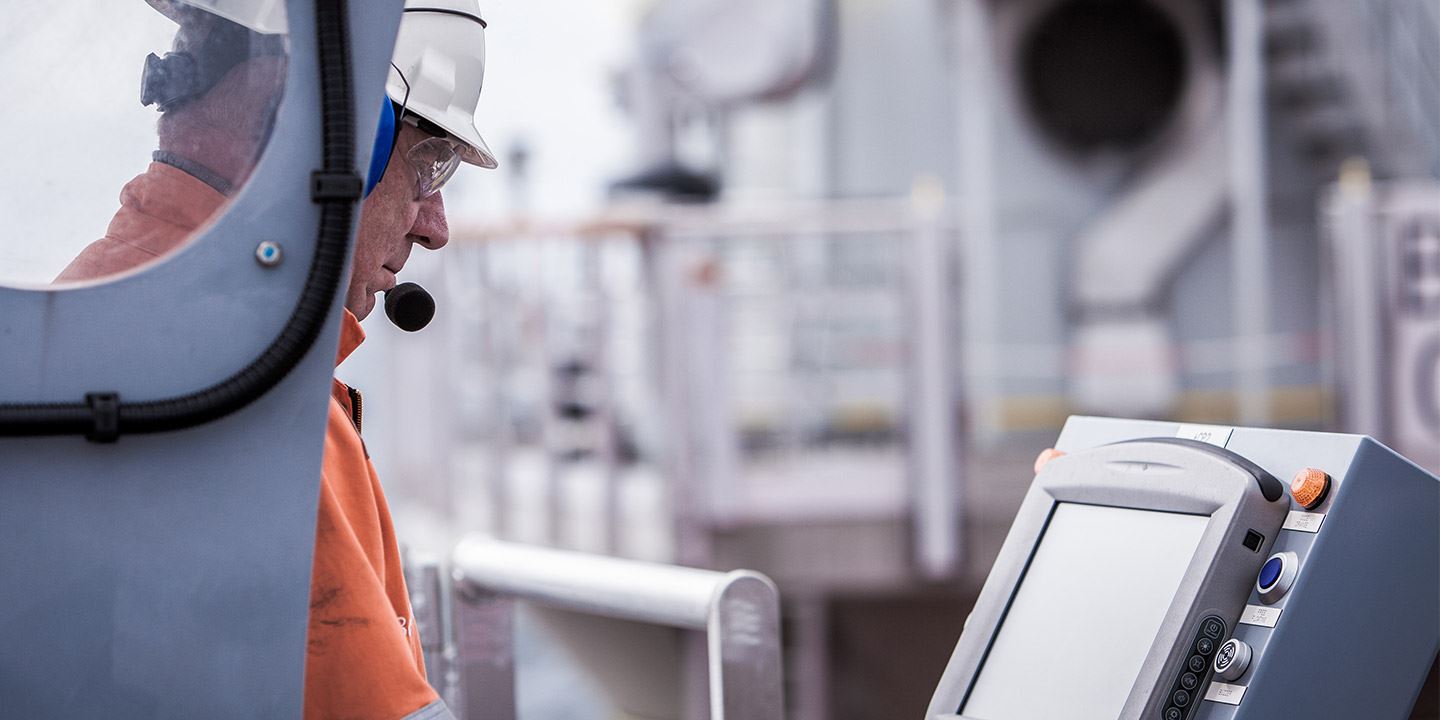
Offshore service: Replacing components
The saviors of the turbines
If you would like to know more about our offshore services and remote diagnostics, please contact Siemens Gamesa.
info@siemensgamesa.comA North Sea wind turbine’s main shaft assembly must be replaced – despite its 26 tons of weight – as one of its two main bearings is developing a defect. With around eight years of experience with wind turbines, Thomas Boesgaard Moeller, Head of Jack-up Operations at Siemens Gamesa, knows the challenges of a heavy-lift exchange: "It's a very demanding and dynamic task. If just one spare part is missing, the entire operations stops."
The team of specialists brings together all the different strands of the complex and precisely coordinated logistics processes. In addition to known factors such as the weight and size of the components to be replaced, they must take into account unknown factors as precisely as possible: the weather, swell, wind force, and possible precipitation could interrupt the mission. But the jack-up team is in top form – and thanks to its experience, aware of all possible interruptions. The most important part of the mission is the so-called "Jack-up Vessel" – a ship that will transport the new main shaft assembly to sea and bring the defective part back to shore.
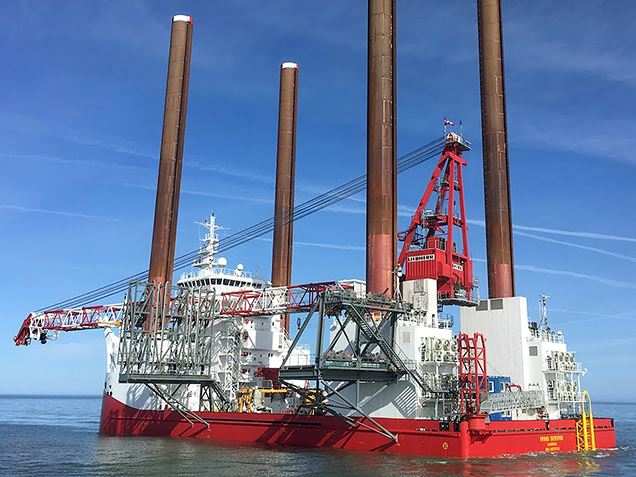
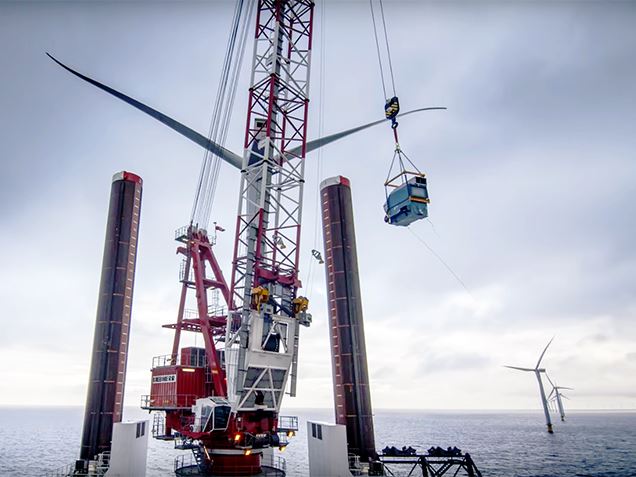
Thomas plans the necessary resources for the team: "How quickly is a jack-up available? How many people do we need on the ship? How many ashore? When will the new main bearing be ready for transportation? Which tools and other components do we need? How much time do we need for delivery and transportation in the current weather conditions?" These are among the questions he needs to have the right answers for.
Together with the experienced team of Maritime and Aviation Solutions from Siemens Gamesa, Thomas prepares the journey. His team takes care of everything to do with the jack-up: route planning, loading and instructing the crew. For the main bearing, however, it’s not just any ship of the fleet that is used: it’s the Wind Server. A self-elevating service platform and crane unit, specially designed, constructed, and equipped for service operations of this kind – exclusively for Siemens Gamesa until 2019.
With our experience and expertise and thanks to the Wind Server we can offer the customer a complete solution that is unique on the market: Everything from a single source.
The jack-up vessel Wind Server is purpose-built to replace heavy components. It is less than 80 meters long, has the necessary crane and service facilities, and a gross weight of 6,300 tons – equivalent to 42 blue whales. That sounds enormous. And it is – at least if you compare it to vessels like the crew transfer vessels. However, compared to other jack-ups that are primarily designed to build wind turbines, it is smaller and more maneuverable.
“Above all, the Wind Server is already fully mobilized and ready for immediate use," explains Mogens, who works closely with Thomas. He continues: “The sea fastening is already done, the crane is prepared for the required tasks, and the tools and experienced crews are already on board. Other vessels need to be mobilized for their missions, which can take up to one or two weeks.”
“This is valuable time in which we can already be at sea and performing tasks for our customers. It’s highly important to ensure proper preparation as this will result in cost savings. For me, the Wind Server is like a Swiss Army Knife – with it, we have everything we need at our fingertips.” The primary planning concern about the Wind Server is where it is currently being used and how it can get to its next location as quickly as possible.
The maritime experts have already been to many offshore wind farms and are familiar with the local conditions. But before the jack-up can set sail, they carry out important analyses each time. For example, a site-specific assessment: using ultrasonic systems, they scan the nature of the seabed. Is the ground sandy or rocky? Are old wrecks or remnants of the war hidden down there? In addition, a leg penetration analysis is also necessary: Where can the extendable steel legs of the Wind Server find a stable hold?
“Precise preparation is essential. In more than ten years, the team has acquired invaluable experience and in-depth knowledge of offshore service logistics. We have continually refined our skills,” says Thomas, who concludes: “On land and at sea, we are a well-rehearsed team that knows what it has to do. Every move fits.”
The onshore logistics experts have meanwhile been hard at work. The new component is ready for use. In the Siemens Gamesa warehouse in the Danish town of Brande, a main shaft assembly suitable for the wind turbine gearbox was available. A heavy goods transporter drives the new assembly and necessary auxiliary systems to the port in Esbjerg, a city on the North Sea coast of Denmark. There, the equipment is loaded onto the Wind Server. Throughout the entire process, the project manager keeps the customer informed.
After only a few days, the Wind Server and its 10-person Siemens Gamesa crew set off on their way to the turbine. The weather has deteriorated. Heavy rain has set in. The wind blows strongly. But the experienced crew and their special jack-up reach their destination safely. In addition to the technical specialists on board there are also a site manager, a person responsible for health, safety and the environment, and an offshore coordinator.
Once they have arrived onsite, the crew positions the ship, which is able to jack itself up at a depth of 45 meters thanks to the extendable steel legs. They transform the Wind Server into a stable platform in the sea. The crew waits until the wind force and precipitation are tolerable – and then they get to work. The technicians take the elevator 68 meters up to the turbine’s top.
To exchange a main bearing, they first need to remove the blades one by one using a special lifting device called “Georgia”, and after that, the hub. In the nacelle, they remove the rotor. Subsequently, they uninstall the defective main shaft assembly and attach the rigging to the 80-metre-high crane, which lifts the component millimeter by millimeter out of the nacelle and down to the ship's deck.
There, they prepare the new assembly for lifting up to the airy heights. The new main shaft assembly is picked up from the vessel’s deck and lifted above the turbine nacelle. Then, the technicians guide the assembly suspended from the crane to the correct position in the nacelle by means of ropes. They insert it into the hollow shaft of the gearbox and bolt everything together. A special Lift Supervisor ensures that these lifting processes are absolutely safe.
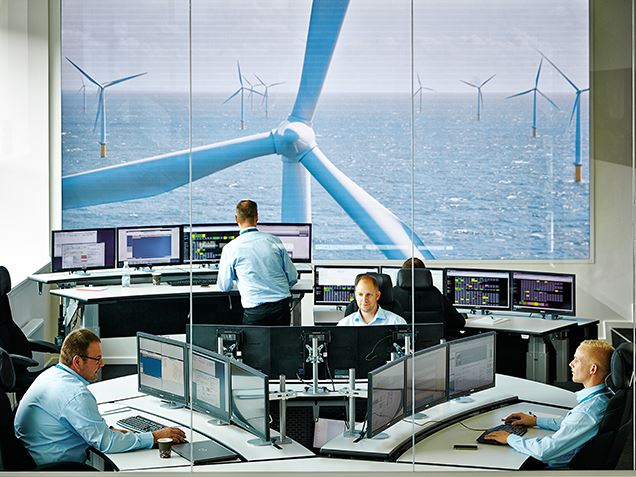
It's done: The new main bearing is sitting and running smoothly. The crew cheers. The operations team on shore and the Remote Diagnostic Center in Brande, which discovered abnormal vibration patterns of the main bearing in the first place, receive the message about the successful heavy-component exchange. Now, an equally important task begins: the root cause analysis.
As the defective main bearing is returned to Brande, a comprehensive after-life process is triggered. A cross-functional team undertakes the task of root cause analysis, starting with the disassembly and preliminary evaluation of the component. After the preliminary evaluation is done, main bearing specialists within engineering, product integrity and a team of specialized metallurgists work on investigating and documenting the root cause of the defect.
Once the analysis is completed, the bearing is stored for future reference; along with every single other main bearing that has failed since 2006. This approach is unique to Siemens Gamesa and provides the company with an advantage when it comes to the understanding of possible future failure modes.
The root cause analysis serves several purposes. First, it will give the customer feedback on what went wrong with the component: it provides insight into the particular failure mode and enables the customer to gain a greater understanding of their components. Secondly, it forms part of a strong feedback loop from service and product integrity, back into the technology division.
This way, we can ensure that proper measures are taken, both in developing new revisions of the components to mitigate risk for commissioned wind parks, and by feeding the lessons learned into the research and development of the next generation of turbines.
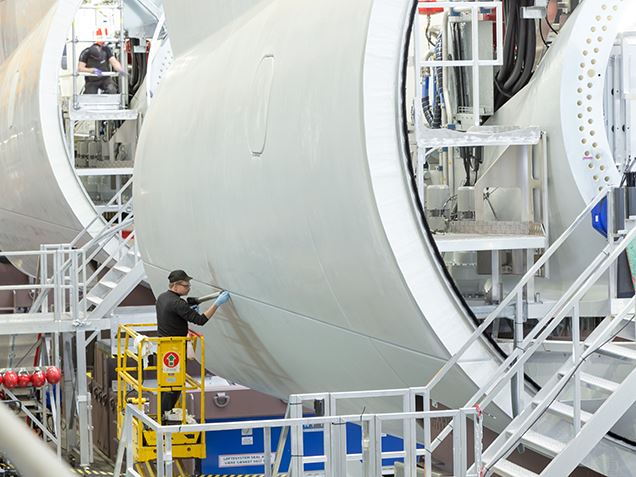
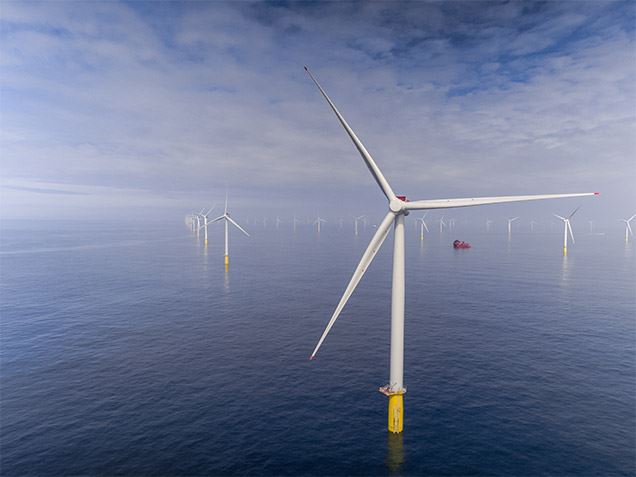
The diagnostic team will use all the digital data collected during the inspection, exchange, and analysis processes to further enhance their damage detection capabilities. As soon as all the technicians are back on the Wind Server vessel and the turbine has gone back into operation, the data analysts perform remote vibration analyses. They recalculate the new technical setup of the turbine. Based on that, they retrain the turbine’s diagnostic models to the new normal situation with which they will compare every tiny change.
The result: The turbine is running smoothly again without any interruptions. All vibration patterns correspond to the target. The temperature is correct. The customer is relieved when they receive the message and pleased that the turbine is producing electricity again – and even more efficiently than before. Bo and his diagnostic team in Brande can now focus on their day-to-day business and continue to do everything in their power to detect damage as early as possible.
It does not happen often, but when a major component of an offshore wind turbine threatens to fail, agility and precision are needed. In some cases it’s even necessary to replace an entire component. This sets an extremely demanding logistical service process in motion: from accurate remote fault diagnosis to the transportation and replacement of heavy components weighing several tons on the high seas.
On- and offshore logistics experts work hand in hand to prepare the heavy-duty parts, tools, specialists, and jack-up vessels specially developed for this purpose. In wind, rain, and sea, every move made by the experienced crew has to be perfectly executed.
With our mini-series, you can learn more about the offshore service logistics concept from Siemens Gamesa, what matters when replacing heavy turbine components ("heavy-lift exchanges"), and why customers can save time and money if they have a reliable and experienced service partner by their side. This is part three of the triology.

